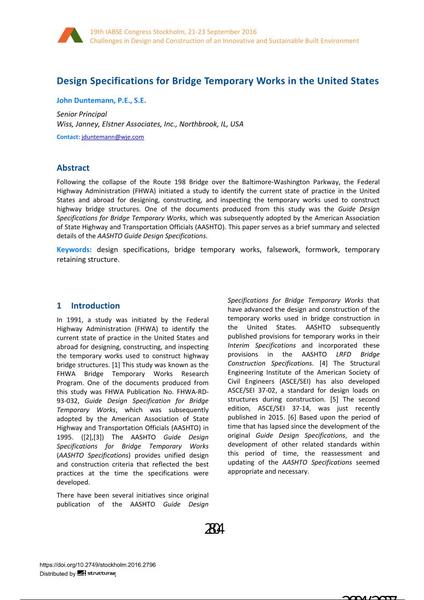Design Specifications for Bridge Temporary Works in the United States

|
|
|||||||||||
Détails bibliographiques
| Auteur(s): |
John F. Duntemann
(Senior Principal, Wiss, Janney, Elstner Associates, Inc., Northbrook, IL, USA)
|
||||
|---|---|---|---|---|---|
| Médium: | papier de conférence | ||||
| Langue(s): | anglais | ||||
| Conférence: | IABSE Congress: Challenges in Design and Construction of an Innovative and Sustainable Built Environment, Stockholm, Sweden, 21-23 September 2016 | ||||
| Publié dans: | IABSE Congress Stockholm, 2016 | ||||
|
|||||
| Page(s): | 2804-2810 | ||||
| Nombre total de pages (du PDF): | 7 | ||||
| Année: | 2016 | ||||
| DOI: | 10.2749/stockholm.2016.2796 | ||||
| Abstrait: |
Following the collapse of the Route 198 Bridge over the Baltimore-Washington Parkway, the Federal Highway Administration (FHWA) initiated a study to identify the current state of practice in the United States and abroad for designing, constructing, and inspecting the temporary works used to construct highway bridge structures. One of the documents produced from this study was theGuide Design Specifications for Bridge Temporary Works, which was subsequently adopted by the American Association of State Highway and Transportation Officials (AASHTO). This paper serves as a brief summary and selected details of theAASHTO Guide Design Specifications. |
||||
| Mots-clé: |
coffrage
|
||||
